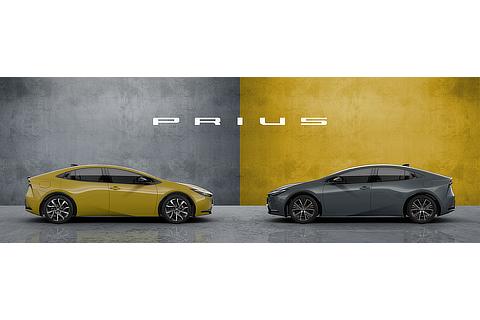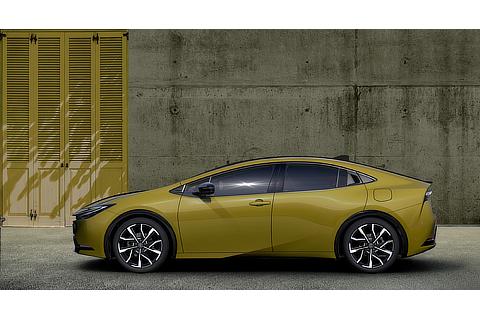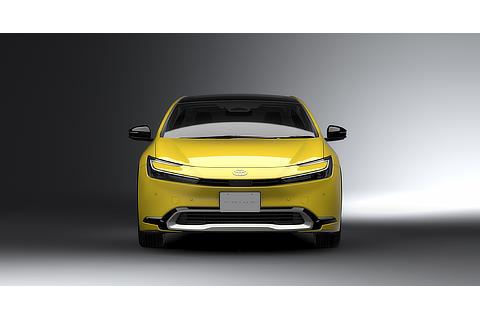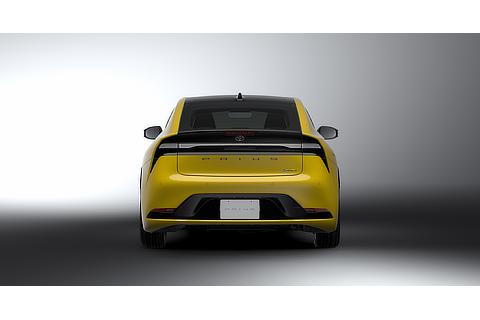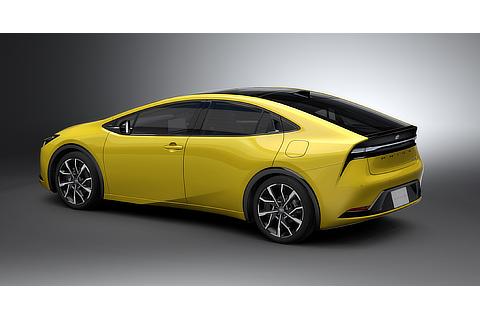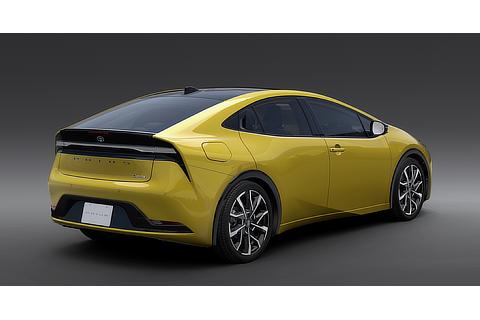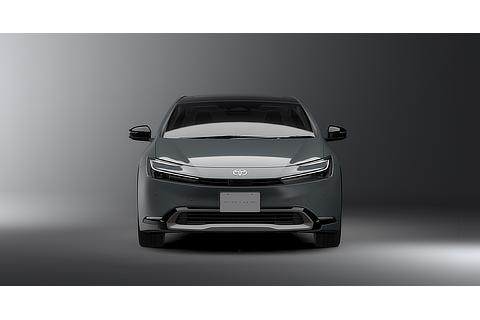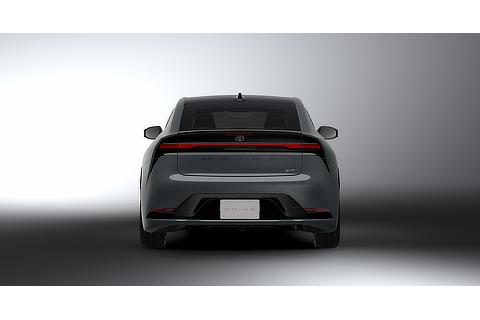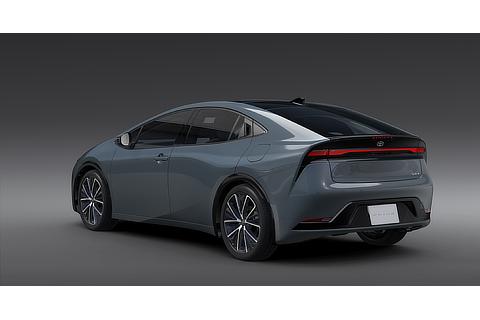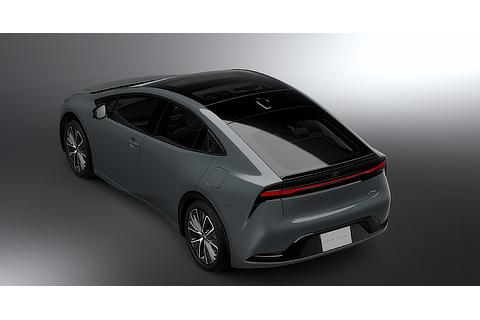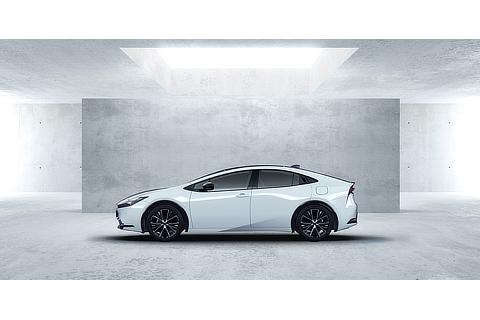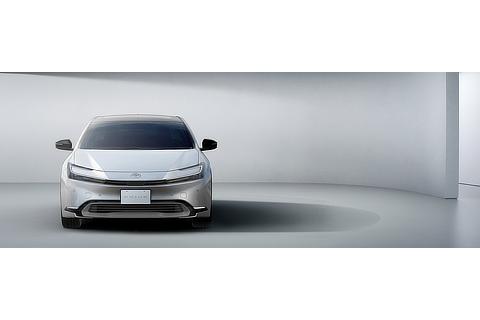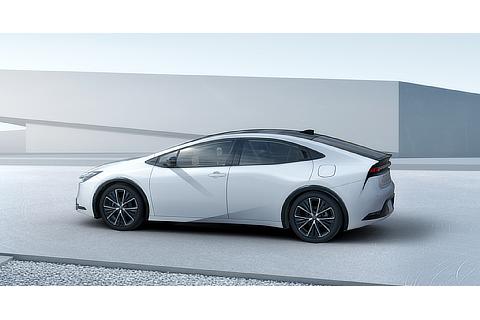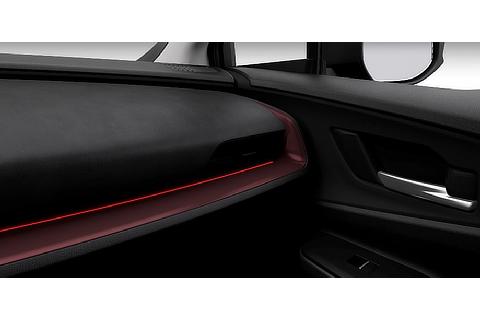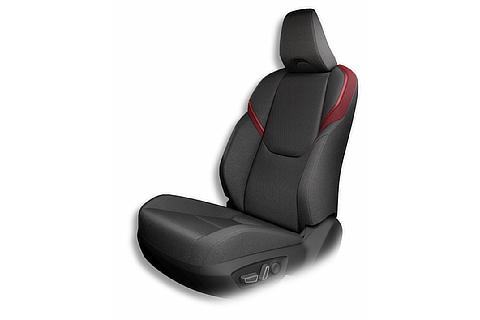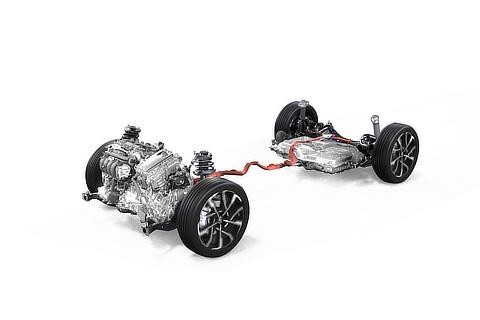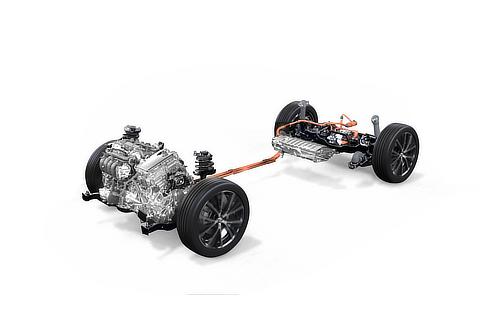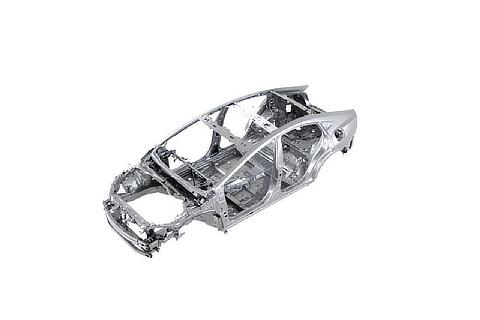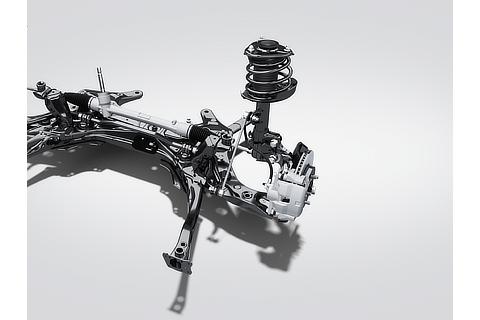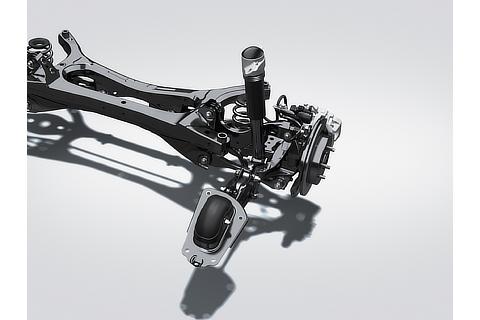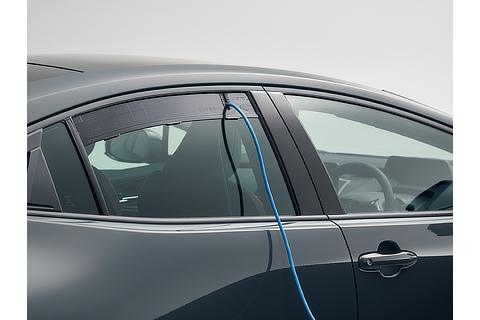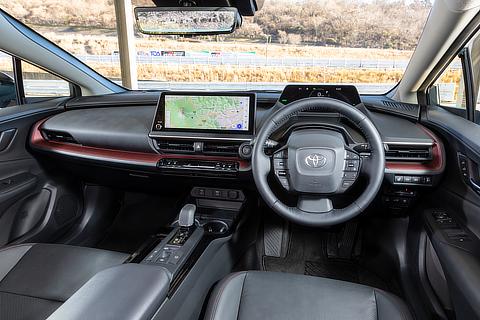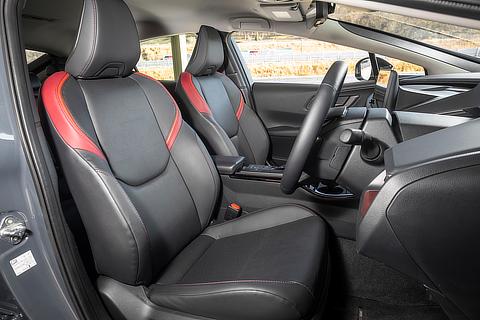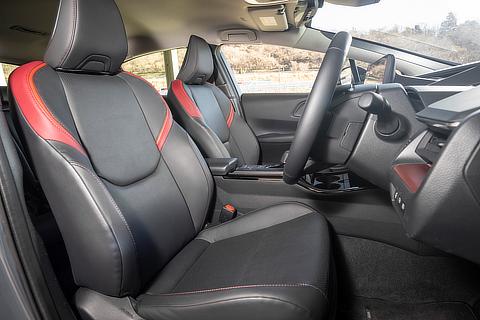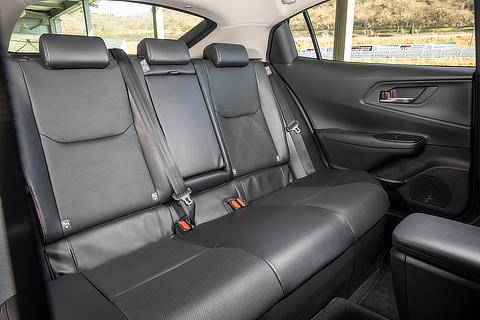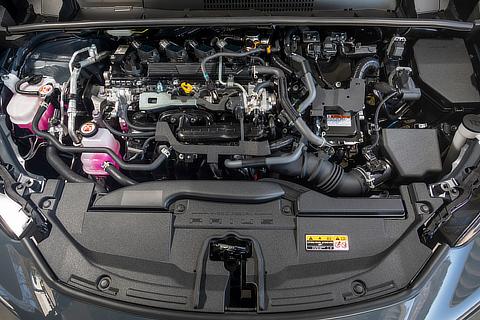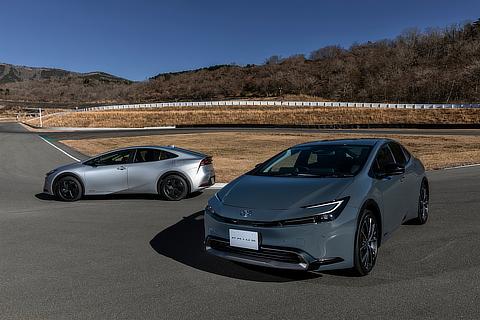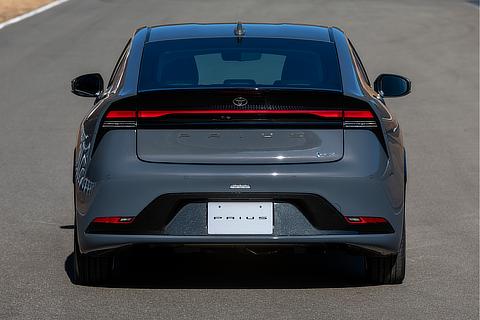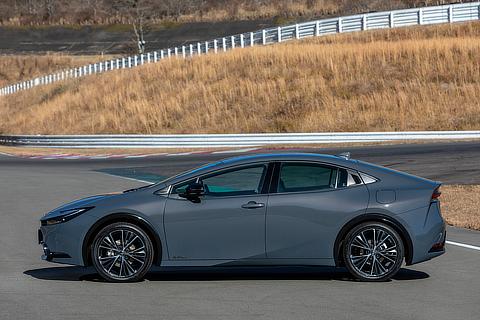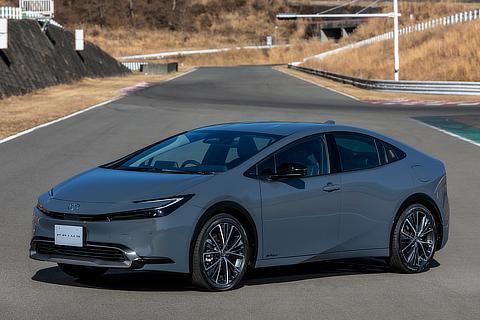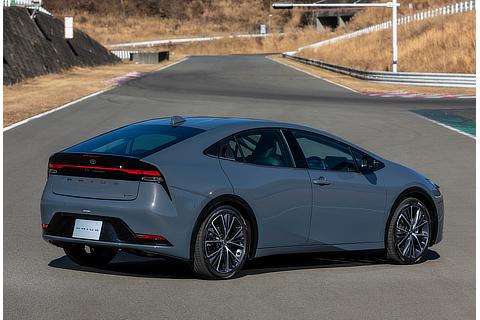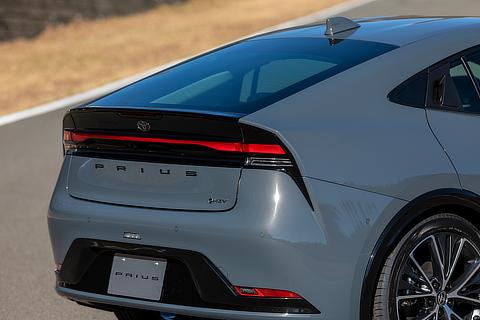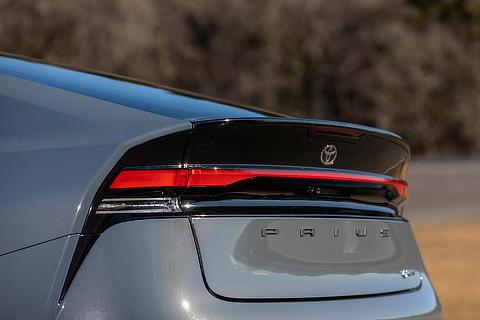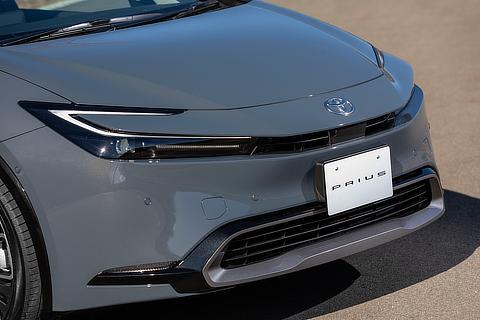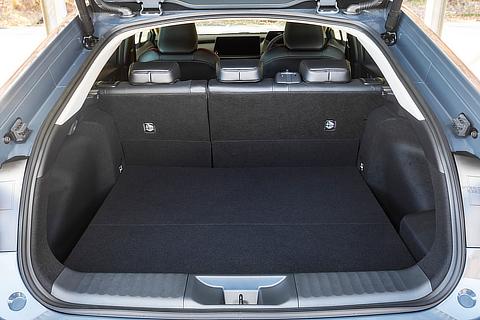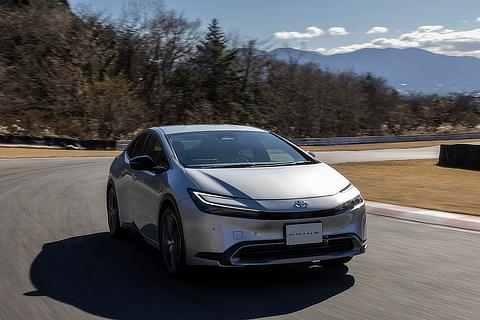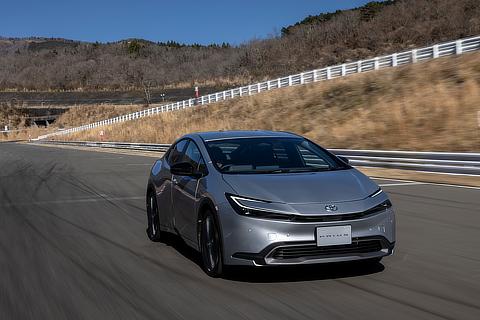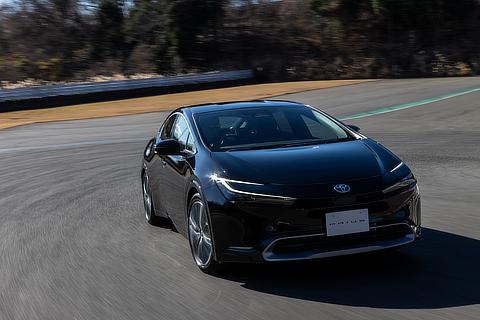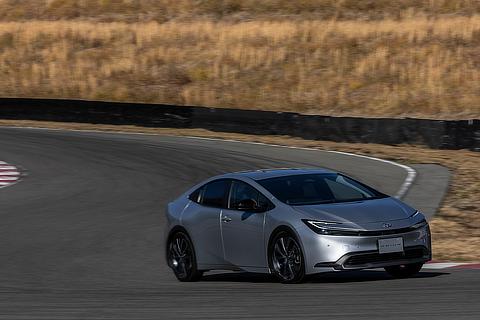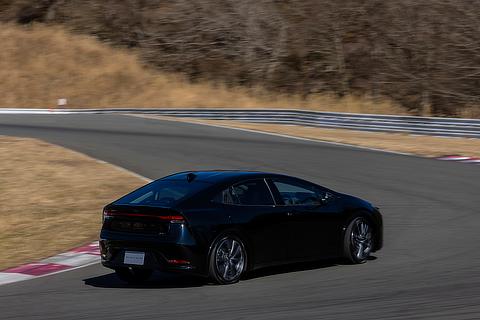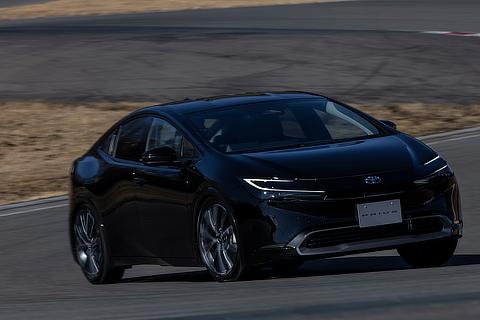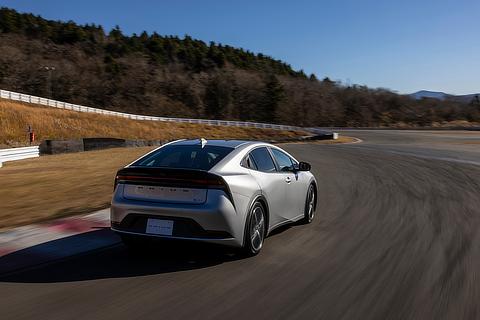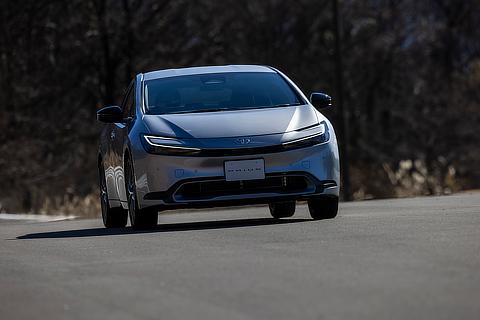Nov. 16, 2022
World Premiere of All-New Prius in JapanPrius undergoes a complete redesign, with thoroughly refined styling and driving performance delivered in a colorful and exhilarating package
- The Prius has evolved under the "Hybrid Reborn" concept into an exhilarating package with stylish designs that users will fall in love with at first sight and captivating driving performance. Toyota's aim was to create a car that owners will continue to love and drive.
- The new Prius inherits the unique monoform silhouette of the original and employs a wide and low stance with large-diameter tires to create stylish designs that appeal to the senses.
- With the fifth-generation hybrid system and second-generation TNGA platform, the new Prius delivers comfortable driving performance that makes users want to keep driving.
Toyota City, Japan, November 16, 2022―Toyota has unveiled the all-new Prius for the first time globally, with Series Parallel Hybrid (HEV) models to launch in winter this year and Plug-in Hybrid (PHEV) models to launch in spring 2023.
-
-

- Prius (2.0-liter PHEV, Prototype)
-
-
-

- Prius (2.0-liter HEV, Prototype)
-
Coming with the tagline "Just in time for the 21st century," the Prius was first launched in 1997 as the world's first mass-produced hybrid car. The model's second generation introduced the Prius' distinctive monoform silhouette for the first time and delivered even better fuel efficiency with the inclusion of an evolved Series Parallel Hybrid System (THSII). The third generation Prius introduced a larger capacity 1.8-liter engine and more efficient hybrid system to not only enhance fuel efficiency but driving performance as well. With the fourth generation, the Prius used the Toyota New Global Architecture (TNGA) platform for the first time to deliver improved environmental performance and an evolved driving experience.
Meaning "to go before" in Latin, the Prius has led the expansion of HEVs over the 25 years since it was first launched as a new-generation eco-car with outstanding fuel efficiency. Total cumulative sales of the Prius worldwide have reached about 5.05 million units*1, accounting for a reduction equivalent to at least about 82 million tons*2 of CO2 emissions as of March 2022. While the hybrid system had its start with the Prius, almost every model these days, from compact cars to SUVs, minivans, and commercial vehicles, has a hybrid version cherished and enjoyed by countless customers.
While the Prius has played a leading role in driving hybrid use, the current spread of HEVs through a wide range of models means it has reached a turning point.
The development team decided to start from scratch and look at what the Prius needs to remain popular for the next 25 years. Based on a desire to renew the Prius itself and communicate the appeal of hybrid cars to an even wider audience, the Hybrid Reborn concept was created.
The automotive industry is going through a once-in-a-century transformation, with a range of new next-generation powertrain options being developed. For the Prius HEV to continue as the vehicle of choice for the coming generation, the new Prius needed more than its core strength as an environmentally friendly car. Therefore, it was developed as an exhilarating package with, stylish designs that users will fall in love with at first sight and captivating driving performance.
Following Japan, the new Prius will be launched in North America, Europe, and other countries around the world. It will also be offered in Japan through the KINTO*3 car subscription service. Actual details of the service plan will be announced in winter this year.
Detailed information about the all-new Prius.
Vehicle details
- A signature of the Hybrid Reborn concept
Sporty exterior styling that appeals to the senses
- Inheriting the signature monoform silhouette of the original Prius, the new Prius has been reborn with even more stylish proportions through a low center of gravity and large-diameter 19-inch wheels on the second-generation TNGA platform.
- The simple yet sculpted body expresses exhilaration that appeals to the senses and a universal beauty that will remain popular into the future.
- The front hammerhead shark-like design achieves a high level of balance between functionality and styling, while the rear design offers rear combination taillights extending horizontally to the left and right, further accentuating the advanced design of the Prius.
-

- Prius (2.0-liter HEV, Prototype)
Interior styling that fuses "fun to drive" with "sophisticated"
- The "island architecture" concept achieves a low-stress, spacious interior with a cockpit that makes it easy to concentrate on driving. Altogether, the interior offers intuitive operation and an enjoyable driving experience.
- The interior comes with black tones throughout and coordinated instrument panel and seat stitching finishes. The interior achieves a balance between sportiness and a new sophistication.
- The instrument panel uses Toyota's first illuminated warning system. In addition to providing an ambient light that highlights the interior, this new Toyota Safety Sense-linked feature is incorporated into the styling. It alerts the driver to detected objects through flashing lights before the audible warnings to create a more reassuring driving experience.
-
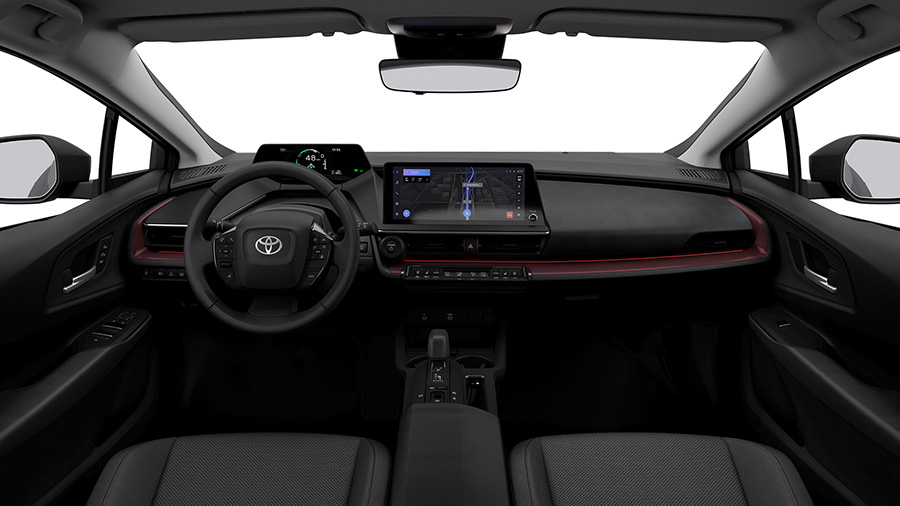
- Prius (2.0-liter HEV, Prototype)
Color design to balance sportiness and refinement
A total of eight body colors are available, including two newly-developed solid base colors of Ash and Mustard that create a sporty impression. The sporty and sophisticated interior color coordination brings touches of color to the daily lives of customers.
- Next-generation hybrid system achieves good fuel efficiency and a comfortable driving experience in a car that reacts as expected
2.0-liter Plug-in Hybrid System
The new Prius comes with Toyota's first 2.0-liter Plug-in Hybrid System to deliver acceleration and quietness that are dramatically improved from the previous model. The combination of a high-efficiency Dynamic Force Engine and lithium-ion batteries for high output drive achieve maximum system output*4 of as much as 164 kW (223 PS) while maintaining the same level of fuel efficiency*4 as the previous model. This version has outstanding dynamic performance with the powerful acceleration of a PHEV, achieving 0-100 km/h in 6.7 seconds*4.
-

- Plug-in Hybrid System (2.0-liter Prototype)
- EV driving range is about 50% higher than the previous model. This means that, with improved battery performance, the new Prius can operate on EV mode alone for most daily drives. It also comes with a "My Room Mode" that lets users enjoy air conditioning and audio systems from the external power source by turning the power switch on during charging, making the interior space even more comfortable.
- With the PHEV, the battery pack is located under the rear seat instead of in the cargo area, giving the new Prius a lower center of gravity and increased cargo capacity. Together, these features deliver a balance between sporty driving performance and improved ease of use.
2.0-liter / 1.8-liter Series Parallel Hybrid System
- This version of the new Prius employs the latest Series Parallel Hybrid System. It offers satisfying acceleration and responsive driving in a car that reacts as expected while maintaining the same level of fuel efficiency*4 as the previous model. Maximum system output is 144 kW (196 PS)*4 for the 2.0-liter version, which is 1.6 times higher*5 than the previous model, achieving an appropriate dynamic performance for the sporty new Prius.
-

- Series Parallel Hybrid System (2.0-liter Prototype)
- This version comes with the latest E-Four system. Employing a high-output motor and other features, it offers improved uphill performance on low-friction road surfaces, like snow-covered roads, and greater stability when turning.
- Further evolved TNGA platform
Second-generation TNGA platform
- The second-generation TNGA platform was developed as an ongoing improvement of the matured TNGA platform to achieve the exhilarating styling and driving performance of the new Prius, allowing for a lower center of gravity and large-diameter tires.
- Additional reinforcement throughout the body has increased rigidity and improved quietness. Using MacPherson struts at the front and a double wishbone setup at the rear, the suspension system provides stability for straight-line driving, responsiveness that meets driver intentions in corners, and easy line-tracing ability. Combined with the latest powertrains, it delivers a captivating driving performance.
-

- High-rigidity body (Prototype)
-
-

- MacPherson struts front suspension (Prototype)
-
-
-

- Double wishbone type rear suspension (Prototype)
-
- The most advanced safety and driving support systems provide reassuring and convenient driving
Toyota Safety Sense
Toyota Safety Sense, the latest active safety package with advanced and improved functions, is standard on all new Prius grades. The range of detectable objects has been expanded even further, enabling enjoyable driving with peace of mind.
Toyota Teammate
The new Prius comes with Advanced Park (with remote function), an advanced driving support system. It enables easy automatic parking and exiting from parking spaces in a variety of parking situations, and with operation outside the car via a dedicated smartphone app, the car can also enter and exit parking spaces remotely.
Safe and reassuring driving
- The new Prius is equipped with a Toyota Safety Sense monocular camera at the front, a rear-facing camera for the Digital Inner Mirror, and an in-vehicle drive recorder. This setup has a clean appearance without a sense of the cameras and wires being retrofitted. The data is stored on the ECU to avoid data corruption and other issues associated with SD cards and properly manage important camera data.
- This model is equipped with two 100 VAC / 1,500 W accessory power outlets; one at the back of the center console and one in the cargo space. Users can select the BEV external power supply mode, which uses power from the battery only without having to start the engine, or the HEV external power supply mode, which recharges the battery from the engine if the remaining power is too low. It also comes with an external electric power supply attachment as standard so that external power supply is possible with the door windows closed to prevent rain and insects from getting in the car when in use.
-

- External electric power supply attachment
- The new Prius also comes with a panoramic view moonroof which can be fully opened to create a sense of freedom within the cabin. PHEV models are equipped with a second-generation solar charging system that achieves a more efficient conversion of solar energy into electricity. This generates power equivalent to driving up to 1,250 km per year*4*6. Electric power generated while parked is used to charge the drive battery, with the system not only supplying electricity for driving but for air conditioning and other functions as well. Electric power generated during driving is used to supplement the auxiliary battery system.
| *1 | December 1997 to September 2022 (present). |
|---|---|
| *2 | Based on total cumulative global sales of 4.99 million Prius and Prius PHEV models as of March 2022 according to calculations by Toyota. |
| *3 | A service that packages automobile insurance, periodic maintenance, automobile taxes, repair expenses, registration expenses and taxes, mandatory inspection fees (in cases of the five- and seven-year plans), and other costs for a fixed monthly fee. |
| *4 | Development targets based on internal measurements. |
| *5 | Compared to the previous model Prius (1.8-liter HEV). |
| *6 | Drive battery charging capacity and BEV driving distance are calculated based on the Japan Photovoltaic Energy Association Labeling Guidelines (FY2016). |
"Achieving zero, and adding new value beyond it"
As part of efforts to pass our beautiful "Home Planet" to the next generation, Toyota has identified and is helping to solve issues faced by individuals and overall society, which Toyota calls "Achieving Zero," hoping to help reduce the negative impacts caused by these issues to people and the environment to zero. Additionally, Toyota is also looking "Beyond Zero" to create and provide greater value by continuing to diligently seek ways to improve lives and society for the future.
- About Beyond Zero
- https://global.toyota/en/mobility/beyond-zero/
Toyota Motor Corporation works to develop and manufacture innovative, safe and high-quality products and services that create happiness by providing mobility for all. We believe that true achievement comes from supporting our customers, partners, employees, and the communities in which we operate. Since our founding over 80 years ago in 1937, we have applied our Guiding Principles in pursuit of a safer, greener and more inclusive society. Today, as we transform into a mobility company developing connected, automated, shared and electrified technologies, we also remain true to our Guiding Principles and many of the United Nations' Sustainable Development Goals to help realize an ever-better world, where everyone is free to move.
- SDGs Initiatives
- https://global.toyota/en/sustainability/sdgs/




